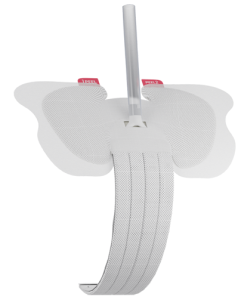About 75,000 deaths are reported each year due to healthcare-associated complications (HAC)
One of the most common nosocomial infections in healthcare settings is catheter-associated urinary tract infections (CAUTI), accounting for almost 40% of all HACs and are caused by the placement of an indwelling urinary catheter. As many as 65-70% of CAUTI episodes can be prevented. Like other HAIs, CAUTI can cause a wide range of complications, as can simply using an indwelling catheter. Being careful while handwashing, using aseptic insertion techniques and other strategies can help prevent catheter-associated UTIs and choosing the right catheter is one of the best ways to minimize instances of CAUTI in female patients.
Catheter-associated urinary tract infections may be symptomatic or asymptomatic. Symptomatic CAUTI can cause fever, urethritis, cystitis, acute pyelonephritis, renal scarring, calculus formation, and bacteremia. If left untreated, CAUTI can also increase mortality rates. In fact, CAUTIs are associated with approximately 13,000 deaths each year.
Women are more likely to counter infections with indwelling catheters than men and the risk increases considerably with a longer duration of catheter use. It was stated that the risk of CAUTI increases by 3-7% each day with the use of indwelling catheters. With diligent research and innovations of the major breakthrough for CAUTI was the development of female external catheters. These external urinary management devices made a considerable impact in reducing Catheter-associated UTIs in women.
Prevent Female CAUTI with External Catheters
Some brands have recently introduced external solutions for female urinary incontinence. Commercial external urine management devices use wick or absorbing or wicking material that is placed between the patient’s labia. While these devices work well for some patients but they are also associated with some drawbacks. The devices are inefficient at keeping the patient dry and significantly decreasing IAD and CAUTI.
Furthermore, these female external catheters require parting of the labia thereby only making them suitable for patients with high body mass index (BMI), and tend to get dislodged and cause leakage in petite patients. The devices also increase concern about the health of sensitive vulvar tissue and the potential for necrosis of the labia. Contrary to the term, these external catheters for women aren’t truly external.
QiVi – First, Truly External Urine Management Solution

QiVi Female External Urine Management Device
QiVi is the first truly external female external urine management device (FEC). The device diverts urinary effluents from the body and is comfortable for patients due to its ultra-soft fabric which absorbs urine, keeping the anatomy dry. QiVi is connected to a vacuum pump to avoid the accumulation of moisture around the applied area and ensures dryness of the anatomy.
The device comprises an adhesive patch, a urine collection chamber, and a cranial suction tube. The soft and flexible urine collection chamber is pliable on two axis, and contours the anatomy externally. The urine is collected in the chamber and is diverted through the cranial suction tubing using negative pressure suction. The cranial tubing also assists in avoiding Medical Device Related Pressure Injuries (MDRPI). The novel derma-friendly adhesive helps offset device anchoring to the less sensitive area of the suprapubic. It keeps the epidermis dry even with repeated usage and even works in the presence of moderate hair follicles.
The QiVi device works in patients with varying anatomies and body types and is compatible in supine, lateral and seated positions. The device does not require parting of the labia and minimizes chances of IAD, CAUTI, pressure injuries and necrosis. For more information, log on to – https://www.consuremedical.com/qivi-fec/
For more information on catheter selection and preventing female CAUTI, consult with a doctor or medical equipment specialist.

